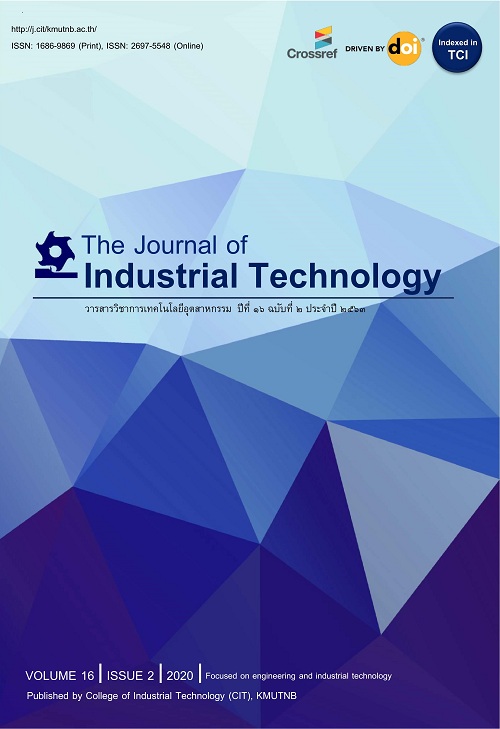การศึกษารูปแบบการเดินทางด้วยระบบขนส่งเสริมสำหรับสถานีรถไฟฟ้าเตาปูน
Pedestrian Transit Simulation of Feeder System Case Study of Tao Poon Station
Abstract
บทคัดย่อ
ในปี 2016 เส้นทางการเดินรถไฟฟ้าช่วงสถานีเตาปูน (สายสีม่วง) – บางซื่อ (สายสีน้ำเงิน) ยังไม่สามารถเปิดให้บริการได้ การรถไฟฟ้าขนส่งมวลชนแห่งประเทศไทย (รฟม.) จึงจัดให้บริการระบบขนส่งเสริมเพื่อใช้ในการเดินทางเชื่อมต่อระหว่างรถไฟฟ้าทั้งสองสายโดยมีทางเลือก คือ รถไฟชานเมืองและรถโดยสารปรับอากาศ งานวิจัยนี้ได้ทำการศึกษาผลกระทบจากการเดินทางเชื่อมต่อด้วยระบบขนส่งเสริม และคาดการณ์ผลกระทบกรณีที่มีจำนวนผู้โดยสารมาใช้บริการเพิ่มมากขึ้น ผลการศึกษาด้วยแบบจำลองสถานการณ์โดยใช้โปรแกรม PTV Vissim/Viswalk พบว่าในช่วงการเชื่อมต่อด้วยรถไฟฟ้าที่ยังไม่เปิดให้บริการนั้น ผู้โดยสารต้องมีการเดินทางระหว่างชานชาลาของสถานีที่ให้บริการสำหรับรถแต่ละประเภท และต้องมีการรอรถที่ให้บริการ ประกอบกับการเดินทางที่ต้องเจอกับปัญหาการจราจรติดขัดในช่วงเวลาเร่งด่วน ส่งผลให้การเดินทางเชื่อมต่อด้วยระบบขนส่งเสริมนั้นเกิดความล่าช้า อย่างมาก แม้ว่าจะมีระยะห่างระหว่างสถานีเพียงแค่ประมาณหนึ่งกิโลเมตร โดยเฉพาะกรณีรถโดยสารปรับอากาศที่แม้ว่าจะมีการให้บริการอย่างต่อเนื่องเมื่อเทียบกับรถไฟชานเมืองที่มีให้บริการเพียงบางช่วงเวลา
Abstract
In 2016, the Mass Rapid Transit (MRT) metro lines service between Tao Poon (Purple Line) and Bang Sue (Blue Line) stations have not yet begun operations. The Mass Rapid Transit Authority of Thailand (MRTA) provides a free shuttle bus and conventional train services to connect the MRT Purple Line and Blue Lines. The shuttle bus and conventional train feeding systems were used as alternatives to the Tao Poon interchange station. This project presents the application of simulation modeling to study the impact of the two interconnected routes under different scenarios. The impact of increasing the passengers using the Purple Line to the planned level has also been investigated. By using the PTV Vissim/Viswalk in simulation modeling, the delay during the interconnection journey has been discovered. To complete the entire journey, passengers need to walk between different station platforms when switching modes of travel. In addition, there is also the waiting time for the new service during the connections. During the rush hour, the road traffic is very heavy. This results in a very long journey time when using the bus despite the fact that the bus comes more often than train and the location of the connected stations are only about one kilometer apart.
Keywords
Refbacks
- There are currently no refbacks.






